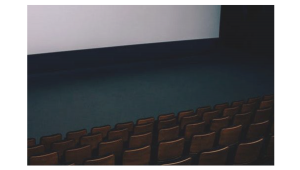I grew up about 20 miles from there. In 1969 I was 12 years old and the flood of people that passed through my small town was eye opening to say the least.
By The Time They Got To Woodstock...

Last fall, while visiting family in upstate New York, I took a side-trip to Bethel, the rural enclave that unwittingly found fame as the last-minute, rabbit-out-of-the-hat site chosen for the 1969 Woodstock Music & Art Fair. We all know what happened that August weekend, what with the 400,000-plus crowd of music-loving hippies descending on an event planned for 150,000, the busted-down fences that turned it into a free concert before it got started, the rain, the mud, the brown acid that was “not specifically too good,” the skinny dipping, more rain, more mud, and of course the legendary musical performances that culminated on Monday morning with Jimi Hendrix’s set and his iconic wailing of the national anthem on his Stratocaster. As the legend goes, the festival was all peace-love-dove from start to finish; nearly half-a-million people packed in like sardines and they never had a fight. ’Cept maybe for that food stand that got burned down for trying to overcharge for a burger.
 I was 10 years old when Woodstock took place, too young to participate, but I became a fan of the ’60s in my teen years and have since read much about the festival and its history. By the time I got to Woodstock — to Bethel, that is — it had, for me, the feeling of hallowed ground. At the top of the steep hill where the concert was held, there is now a modern multimedia museum and event venue called The Bethel Woods Center for the Arts. It’s highly recommended, full of artifacts and documentary videos that bring the era to life and put the festival in appropriate context, plus plenty of awesome concert and interview footage. A highlight of the day was walking the ground that transformed from Max Yasgur’s alfalfa ¬field to the mass of humanity we’ve all seen in the aerial photography. At the base of the bowl there’s a commemorative monument that, for a long while, was the only recognition of what had happened there. The flat platform-like area at lower left in the photo above is approximately where the stage was set up; they still use the site periodically for concerts.
I was 10 years old when Woodstock took place, too young to participate, but I became a fan of the ’60s in my teen years and have since read much about the festival and its history. By the time I got to Woodstock — to Bethel, that is — it had, for me, the feeling of hallowed ground. At the top of the steep hill where the concert was held, there is now a modern multimedia museum and event venue called The Bethel Woods Center for the Arts. It’s highly recommended, full of artifacts and documentary videos that bring the era to life and put the festival in appropriate context, plus plenty of awesome concert and interview footage. A highlight of the day was walking the ground that transformed from Max Yasgur’s alfalfa ¬field to the mass of humanity we’ve all seen in the aerial photography. At the base of the bowl there’s a commemorative monument that, for a long while, was the only recognition of what had happened there. The flat platform-like area at lower left in the photo above is approximately where the stage was set up; they still use the site periodically for concerts.
Coincidentally, my visit to Bethel came just a few days before I was tasked with doing an inventory in our New York office of the stored archive of our magazine. And what a library it is. This publication was founded in February 1958 as HiFi & Music Review, when the big news in audio tech was the transition from mono to stereo. It became HiFi Review in early 1959 and Stereo Review in November 1968. That stuck until February 1999 when SR was combined with the recently acquired Video magazine to form Sound & Vision. At our peak of popularity in the late 1980s and early 1990s, circulation was 650,000. Today, it’s 85,000. But we keep plugging away. It’s my honor to hold up the banner as we set sights on our 60th anniversary year.
This publication was founded in February 1958 as HiFi & Music Review, when the big news in audio tech was the transition from mono to stereo.
 In perusing the early issues, it became apparent that our founding fathers were of the erudite, pipe-smoking, suit- and lab-coat-wearing type who, along with their fascination for the gear, snobbily held the classical genre as the standard-bearer for music; jazz and Lena Horne records were added only grudgingly to the coverage as time went on. So, fresh from my Bethel visit, I couldn’t resist leafing through the late 1969 issues to see what, if anything, the magazine had to say about the Woodstock festival. And there it was in the October issue, in the up-front column from then-editor-in-chief William
Anderson, this one titled “Pot-Rock Festivals.” It never specifically mentioned Woodstock by name, but didn’t need to:
In perusing the early issues, it became apparent that our founding fathers were of the erudite, pipe-smoking, suit- and lab-coat-wearing type who, along with their fascination for the gear, snobbily held the classical genre as the standard-bearer for music; jazz and Lena Horne records were added only grudgingly to the coverage as time went on. So, fresh from my Bethel visit, I couldn’t resist leafing through the late 1969 issues to see what, if anything, the magazine had to say about the Woodstock festival. And there it was in the October issue, in the up-front column from then-editor-in-chief William
Anderson, this one titled “Pot-Rock Festivals.” It never specifically mentioned Woodstock by name, but didn’t need to:
I had solemnly promised myself some weeks ago that I would refrain from commenting on the Dionysian revels that erupted in the world’s barnyards late this summer. However, getting the subject off my chest and onto paper will perhaps protect my blood pressure from being assaulted by any more of those aftermathematics (“300,000 people and not one fist fight,” “thousands of empty milk cartons”) the Pollyanna sob-sisters of the mass media have so relentlessly insisted we be impressed by. These thunderingly irrelevant clichés and other non sequiturs of equally revolting sentimentality have so unbalanced the minds of even the most level-headed commentators that they can comment on the peaceful somnolence of the crowds in one sentence and report on the pot-smoke fog index in the next without seeing any possible connection. A few fist-fights would, it seems to me, have been very much in order for any sane human community — a good poke in the nose, say, for those purveyors of ‘bad acid’ (I thought we had already agreed that none of it was good) and those profiteering water brothers charging what the traffic would bear for common pump juice.And on he went, finally getting to the music, “...ah yes, the music. Moldy-fig over-forty that I am, I find it little short of remarkable that even placid, passivated sheep could hold still for all that high-priced talent playing music that contains so little for the mind to lay hold of.” And here I was standing on the site just a few days earlier, wishing I could turn back time and see the likes of Hendrix, Janis Joplin, The Who, Creedence Clearwater Revival, The Grateful Dead, Jefferson Airplane, et al., playing on that singular stage. The times they have a changed, eh?
And that’s just one tidbit I encountered in my browsing. With our six-decade history, there’s hardly a consumer audio or video invention that Sound & Vision or its predecessors have not reported on. So in honor of our birth year, we’ll be tapping regularly into our past in the coming months to take some fascinating looks back at the birth of innovations that got us where we are today. With any luck, we’ll be doing it again for our centennial 40 years from now.
- Log in or register to post comments

Here are two quotes that appeared periodicals published by The Entertainment Network recently. Herb Reichert, in his review of the Outlaw Audio RR2160 stereo receiver on November 16, 2017, 'Too many manufacturers would rather sell five pairs of loudspeakers for $500,000 each than 5000 pairs for $500 each.' Rob Sabin, in his By The Time They Got To Woodstock...post on December 8, 2017, 'At our peak of popularity in the late 1980s and early 1990s, circulation was 650,000. Today, it’s 85,000.' Yep.





























































